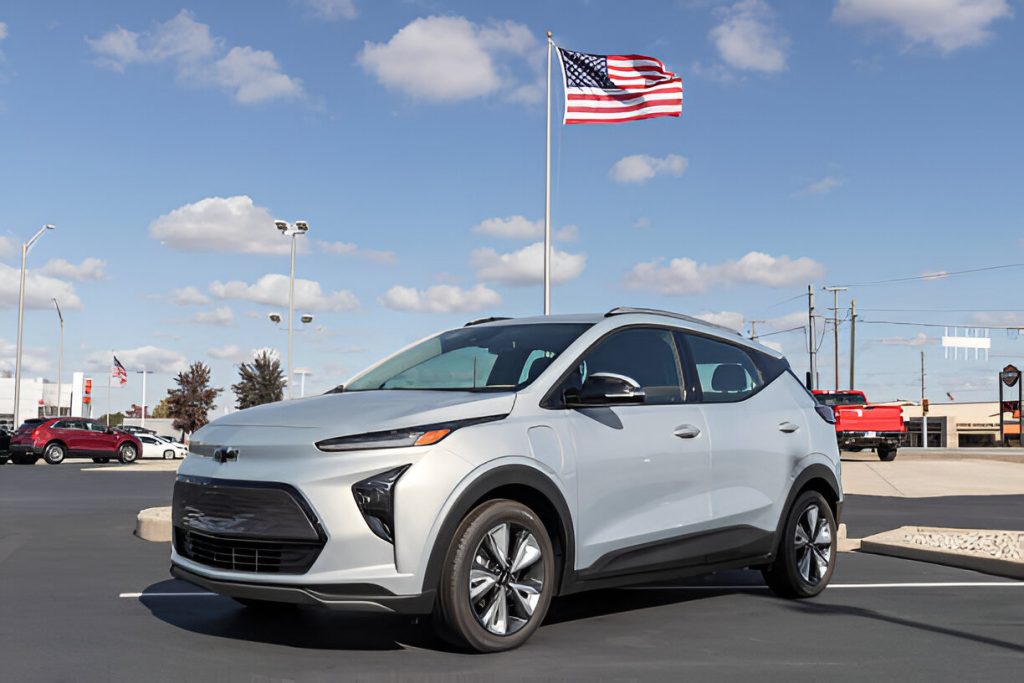Our Partners







Insights into Healthcare
There are a variety of reasons someone might choose to adopt the vegan lifestyle. Perhaps they are a strong believer in animal rights, deciding that they won’t be part of the industrial harvesting of animal products for human consumption. Maybe
News, Legislation, and Innovative Solutions
#Our Lives

Your Trusted Source for Healthcare Developments, Policy Updates, and Solutions that Shape Lives
Empowering Insights into Healthcare
The Builders Guide to Saving Money On Your Home Repairs

Maintaining your home can end up being a very expensive thing but it’s an important thing to keep on top of as without having a good routine for home maintenance it leads to more expensive larger repairs being needed. Home repairs can be extremely expensive, especially if you don’t have much general knowledge around the various different things that can cause damage as it can leave you in a position where you can be overcharged for a repair service purely because of lack of knowledge. Even if you are knowledgeable about home repairs; what the problems are, how they can be solved, what materials are needed to fix the problem etc. This builder’s guide on saving can still help you with some extra tips and tricks on how you too can save some money on home repairs. Many builders advise that to keep on top of home repairs you should factor into your savings 1% of your home’s value, so if your home costs $200,000 then you should save $2,000 a year to be prepared for repairs as a general rule. If you live in an older house then it’s advised that you should save more as older houses are more likely to develop more problems, this is also the case with new build houses as they have a higher chance of developing issues.
Do it Yourself
This is the number one piece of advice that any builder could give as it is the single best way to save money on your home repairs. What problems you can deal with alone depends on your level of skill and how much knowledge you have. Even as a total beginner there will be plenty of issues you can fix around your home, some that a builder’s guide recommended include thing such as fixing a patchy lawn, you can save lots of money by doing this yourself rather than paying a large amount to a lawn company to fix it with chemicals. Beginners could also fix their own dishwashers that are letting off bad smells, this is one of the simplest issues that people call in handymen for, but it’s simple to fix, simply remove any food scraps that have built up and run an empty dishwasher cycle to let the dishwasher clean itself. There are so many more repairs around the home that beginners could do themselves with just a bit of home research, if you are a beginner however then it’s good to make sure you feel confident you can repair the issue you’re trying to fix as if you make it worse it could end up costing you more.
Research & Reviews
The other big piece of advice that builders give about how to save on home repairs is that if you can’t do the repair yourself, then do adequate research on the handymen you’re looking at hiring, look at previous reviews and check that they’re a quality professional. If you hire a builder who isn’t fully qualified, they could make a mess of the repairs they do in your home, for example, truly exclusive roofing leads are hard to find but it’s worth putting the effort in to find. If you hire someone who attempts a job but messes it up, you won’t realize straight away that they’ve done an unsatisfactory job and it’s usually hard to get your money back from them. This means you’ll have to hire another builder to fix the mess and you’ll end up paying twice. This is why the best piece of advice is to read reviews and ensure you’re getting a high-quality builder in the first place.
Why More Universities Are Focusing On The Humanities

Universities worldwide are changing their focus on academic courses and putting more emphasis on the humanities. These courses have subjects that cover a wide range of academic fields that examine human culture, thought, and experience.
Hence, learning areas like literature, philosophy, history, and the arts are becoming as important as traditional STEM (Science, Technology, Engineering, and Mathematics) programs. This shift might seem odd in a world where tech plays such a big role in our daily lives. However, there are good reasons universities are paying more attention to the humanities.
Let’s look at some of the main reasons why more students are drawn to the humanities.
Addressing Society Issues
Another reason higher learning institutions are paying more attention to the humanities is that they help people deal with global challenges. Things like the changing climate, injustices in society and fights between countries are tough issues that require a unique approach. Human experts need more than technology and scientific data to solve these issues. They need to understand how people act, what they believe, and what’s right and wrong.
As the world encounters emerging technologies and scientific breakthroughs, ethical issues come to the forefront. For instance, how can nations tackle genetic engineering, AI, or climate change? Fields in the humanities like philosophy and ethics are key to steering these choices.
The humanities also impact ensuring that social justice prevails and human rights are protected. By studying history, literature, and the arts, future professionals learn the hardships and victories of various groups, which motivates them to speak up for a fairer and more balanced world.
Demand for Human Skills
A major reason universities are stressing the humanities is the growing need for people skills in the job world. As much as technical know-how matters, employers appreciate the fact that people skills geared towards solving personal problems and understanding others are equally important. For instance, effective communication is essential in every job. Whether you’re writing reports, giving talks, or working with others, you need to know how to share your ideas well.
In today’s complex, fast-moving world, people who can think strategically, manage human resources and investments, and generate new business ideas are in high demand. Many businesses face tricky problems that require fresh ideas. Studying the humanities gives people a wider perspective, helping them tackle issues from new angles and devise clever fixes.
Additionally, getting along with others is key in jobs like managing teams, helping customers, and taking care of patients. The humanities teach students to better grasp how people feel and connect.
Human Design
Human Design blends different components to build a distinct blueprint of someone’s character and how they spend their energy. Human Design chart groups people into various types, including the Generators, Manifestors, Projectors, and Reflectors.
It has been established that the Generator type of Human Design makes up 70% of people who take the test. This group of individuals has a reputation for their steady energy and leaning towards work they find fulfilling and meaningful. Their gut feelings drive them, and they flourish when they do something that matches their true passions.
Hence, humanities allow Generators to explore topics that make them curious. This connection with the humanities might explain why more students are choosing to study these subjects and why universities are responding by growing their humanities programs.
Fosters Personal Growth
Another reason for the increased attention paid to the humanities is the intention to nurture well-rounded individuals. Educational institutions increasingly understand that the goal of education is not only to prepare students for defined careers but also to develop people with critical thinking, ethical reasoning, and valuable socio-economic contributions.
Students engage in reflecting on their experiences, beliefs, and values as a result of the humanities. This reflective practice is important for personal development and supports students in forming a robust identity and purpose.
The humanities provide students access to the richness of human culture, covering historical civilizations as well as modern social realities. This kind of exposure cultivates a meaningful value for diversity and enables students to be more receptive and empathetic.
Changing Job Market
The employment landscape is shifting rapidly as new industries and positions appear persistently. Although technical skills are necessary, employers are now prioritizing job candidates who are capable of change, think critically, and communicate well—skills enhanced by the study of the humanities.
As the job market keeps shifting, universities are increasing their focus on the humanities to prepare their graduates for a dynamic and different career atmosphere. Graduates in the humanities frequently receive recognition for their flexibility. Possessing solid writing, research, and analytical competencies, they bring value to diverse career paths, from business and marketing to law, public relations, and leadership.
Conclusion
As the world becomes increasingly digital, with many studies directed towards STEM courses, human skills are needed. These skills promote social interaction and solve interpersonal or social issues that man-made machines can not comprehend.
How Tampa Bay Is Dealing With The Recent Flooding

Famous for its lovely beaches and pleasant climate, the Tampa Bay region has recently experienced extreme flooding. This emergency problem has affected people’s lives at home, in business, and their daily lives. Flooding in Tampa Bay has been a long time problem, but with the intensifying effects of climate change, storms have become both more frequent and intense, forcing the community to deal with their aftermath.
This article will explain how Tampa Bay is handling the recent flooding and the procedures being adopted to minimize risks in the future.
Immediate Emergency Responses
To respond to the latest incidents of flooding, Tampa Bay has enacted several procedures to protect both its population and its infrastructure. Here’s what is being done in the immediate efforts:
Rescue Operations
A quick rise of floodwaters could trap people in their houses or cars. Residents who were left stranded were rescued by the local fire department, police, and even the Coast Guard. Some localities experienced a situation where boats became the sole means of accessing people trapped by floodwaters. First responders have been committing themselves around the clock to ensure that everybody is safe and accounted for.
Clearing Roads
Tampa Bay’s flooding has impaired many roads. City workers are focused on removing debris, draining water, and reestablishing safe travel on critical highways. In some places, this has involved removing water from streets in low-lying areas and restoring road surface damage.
Traffic disruptions have been a prominent issue, with road closures and detours causing travel issues citywide. Nonetheless, endeavors are being made to get traffic moving again as fast as possible.
Relocation and Reconstruction
When the flooding started, authorities from the municipality moved quickly to relocate those in the highest-risk areas. Due to their proximity to the coast or rivers, many neighborhoods were in high danger of flooding, so residents were advised to relocate to safer locations. Evacuation centers and shelters set up across the city provided temporary housing for people in need.
Residential property owners have begun reconstructing their units by hiring reliable contractors to ensure residents resume their normal lifestyles as quickly as possible. That includes contracting expert construction companies and roofing services to fast-track the process. One such contractor is the Roofing Company of Tampa Bay and surrounding cities. This and other professional contractors are providing quality reconstruction, roof installations, and reliable repairs. This will ensure the damaged homes are well renovated and the surroundings are free of debris upon completion.
Long-Term Recovery and Management
While immediate action in response to the flooding has been fruitful, the city of Tampa Bay is now considering long-term solutions to either prevent or minimize damage from future flooding events.
Upgrading Drainage Systems
One of the main long-term projects involves enhancing Tampa’s stormwater drainage systems. Designed years ago, these frameworks are unsuited for dealing effectively with today’s weather events. City officials are developing plans to improve the infrastructure, including building larger drains and additional retention dams to store excess water. They will also ensure that new developments include efficient drainage systems. These improvements will take time and considerable funding.
Constructing Coastal Barriers
Another strategy being discussed is the building of better-protected coastal systems. This may involve sea walls, levees, and natural barriers like mangroves or artificial reefs that can lower the influence of storm surges. In addition to protecting homes and businesses from rising water levels, these defenses can slow the rate of erosion along the coastline.
The task at hand is to harmonize these construction projects with environmental issues. Planning any construction near important ecosystems is essential to avoid causing unanticipated harm.
Amending Construction Regulations
Many authorities are now focusing on improving building codes to better adapt to future floods. This includes matters such as the provision that structural development be established on higher elevations, the use of flood-resistant materials, and the elevation of home construction.
Zoning may also be evolved to reduce the extent of development in areas most sensitive to flooding. Significantly, the development of the city through new structures also controls how it is developed so as to avoid future disasters.
Uptake of Property Insurance
With the recent flood disasters, it has become even more important for Tampa Bay residents to have enough flood insurance coverage. Currently, the NFIP provides flood insurance to owners and residents, but it does not cover every person in the country. Various stakeholders in cities are trying to educate communities about acquiring natural calamity insurance, especially those within flood-prone regions.




